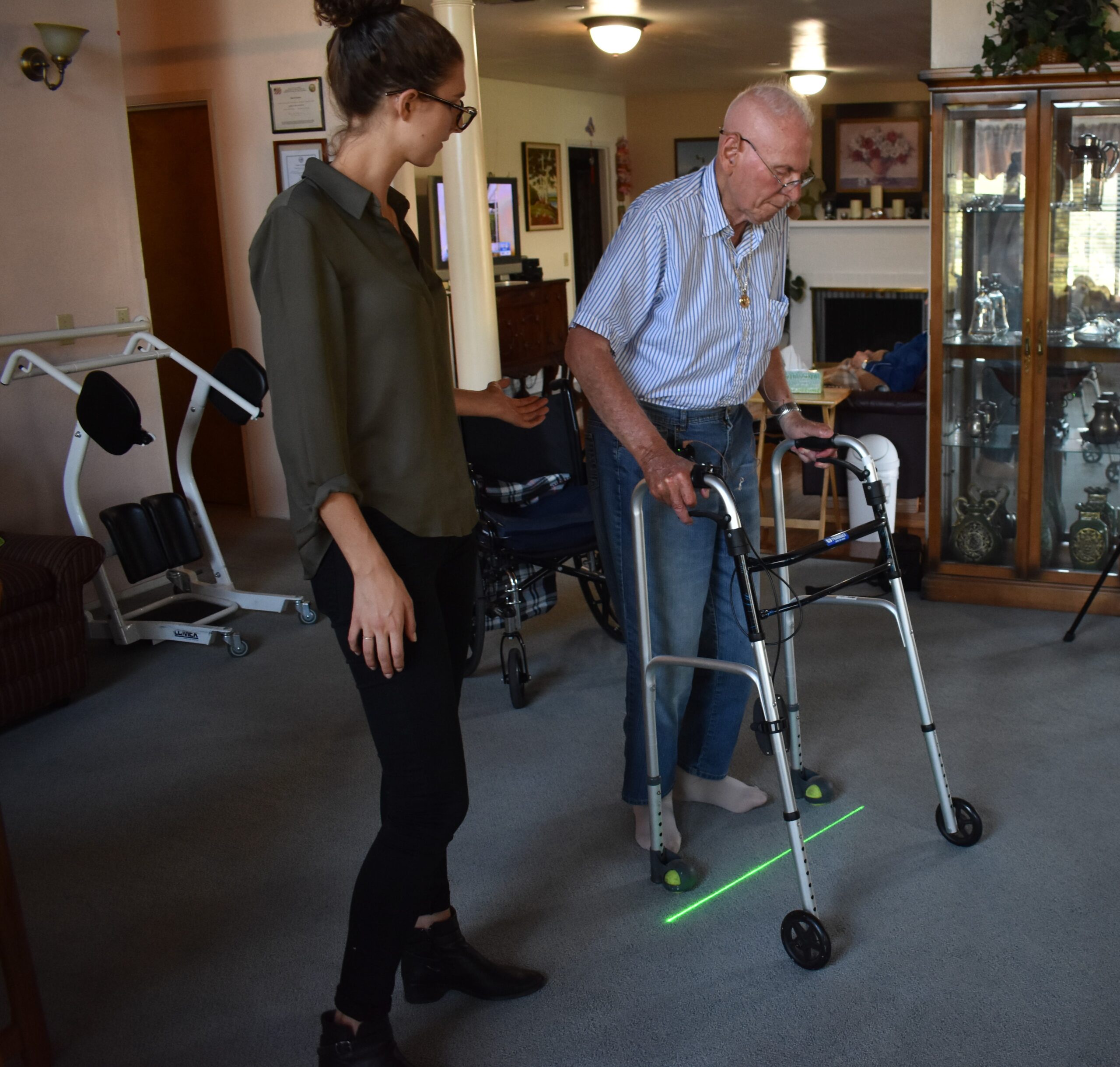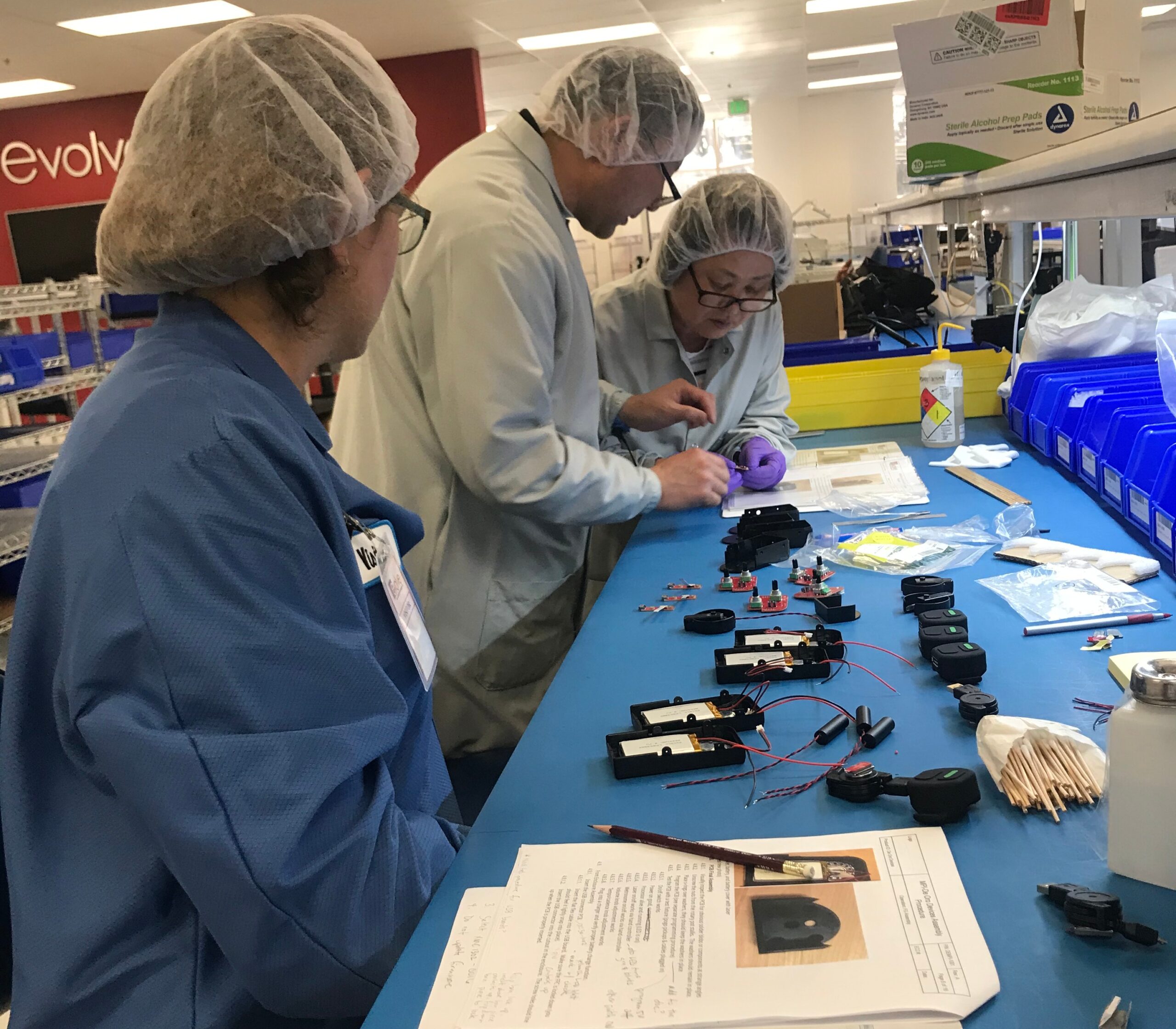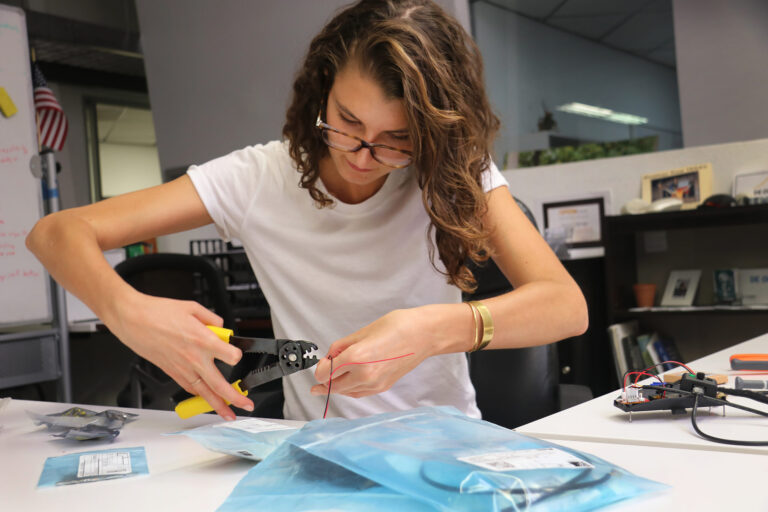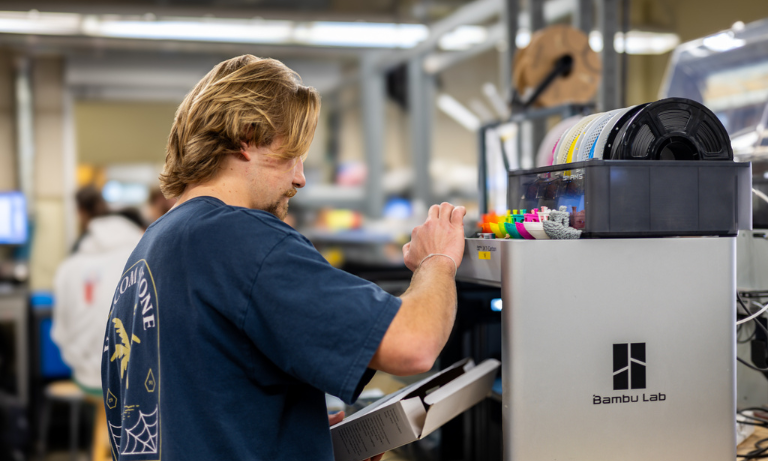As a biomedical engineering student, Sidney Collin developed an innovative device for a local veteran with Parkinson’s disease, which now transforms the lives of people across the globe with brain or nerve conditions, allowing them to walk safely and regain their independence.
Collin launched the company that evolved from her student project – De Oro Devices – shortly after graduating from Cal Poly in 2019, putting the invention that guides the mobility-challenged using light and sound signals into thousands of homes.
Her invention was inspired by Korean War veteran Jack Brill, who had Parkinson’s disease – a nervous system disorder that typically involves the slow degeneration of neural pathways that brainwaves rely on to communicate with the body.
Since the automatic signals from Brill’s brain did not consistently reach his body, he experienced freezing episodes when his body simply would not move. About one third of people with Parkinson’s disease experience such episodes.
“Freezing is incredibly debilitating,” said Collin, describing the sensation of your feet being glued to the floor.

Looking to replicate the visual and auditory cues that aided his mobility in therapy but were absent at home, Brill, a former engineer, reached out to Cal Poly. Through a program in the College of Engineering, he was paired with Collin, who uncovered research on the effectiveness of cueing techniques previously unavailable outside physical therapy clinics.
“We know the cues work, so why don’t people have access?” Collin asked herself. “No one had made that jump.”
Collin did, however, make that leap, designing a small device that attached to Brill’s walker or cane, giving him visual and auditory cues to keep his brain and body connected. The device she called NexStride changed his life, giving him the freedom to walk anywhere, any time he wanted.
“Seeing the profound impact on Jack’s life, I stayed close to him until his death a couple of years ago,” Collin said. She was deeply moved when, at his funeral, Brill’s son embraced her and referred to her as family.
Collin remains dedicated to expanding the reach of her invention, aiming to help not only individuals within the Parkinson’s community but also to provide crucial support for those facing mobility challenges, particularly in mitigating the risks of falls among the aging population.

Bringing NexStride to the world
Upon seeing the transformative effect her invention had on Brill, Collin was determined to make NexStride accessible to a broader audience.
The device, slightly larger than a computer mouse, effortlessly attaches to a cane or walker. It is designed to aid patients who experience freezing of gait; at the press of a button, they can activate either an audio cue, in the form of rhythmic beeping, or a visual cue, through a green laser line projected on the ground, to disrupt the freezing episodes and facilitate movement.
“We wanted to keep the product as simple as we could to alleviate the fear around technology,” Collin said.
Transitioning from campus to Cal Poly’s Center for Innovation & Entrepreneurship in downtown San Luis Obispo, her product gained momentum by not only clinching victories in startup pitch competitions on the Central Coast and Southern California but also by effectively attracting investors.

In early 2020, Collin, alongside co-founder William Thompson, an MBA graduate from Cal Poly, launched De Oro Devices. The company’s name was inspired by Montaña de Oro, a locale that for them symbolized comfort, confidence and serenity.
Today, the NexStride device is used in 150 physical therapy offices and thousands of homes, with sales spanning seven countries. Also, De Oro Devices has become an approved vendor for the Department of Veterans Affairs and broadened its business to include sales to senior living facilities.
“I never in a million years thought I would be here,” said Collin, who now runs the SLO-based company from her home in Austin, Texas.
Propelling Collin are the stories shared by her customers, which fuel her passion and commitment.
One man, severely hindered by Parkinson’s-induced freezing, lived just three blocks from the beach in Florida yet hadn’t managed to walk there for years. After attaching NexStride to his walker, he was finally able to make the journey to the shore.
“Testimonials like these are what keep me motivated, showing up and working long hours,” Collin said. “Hearing from people through phone calls, emails and videos about how their lives have been transformed is incredibly inspiring.”
Another account came from a woman with Parkinson’s living in a senior care facility in New York, who had a history of frequent falls, including four incidents in the month before taking part in a clinical case study. Throughout the 18-day study, where she used a NexStride device on her wheeled walker, she didn’t fall once.
Collin understands the grave risks falls pose to Americans over 65, leading in both fatal and nonfatal injuries, and believes De Oro devices can have a significant impact in that space. With plans to introduce five or six new devices, her goal is to effect change on a broader scale.
“We can help people live independently and confidently, without the fear of falling,” she said.
By Emily Slater


